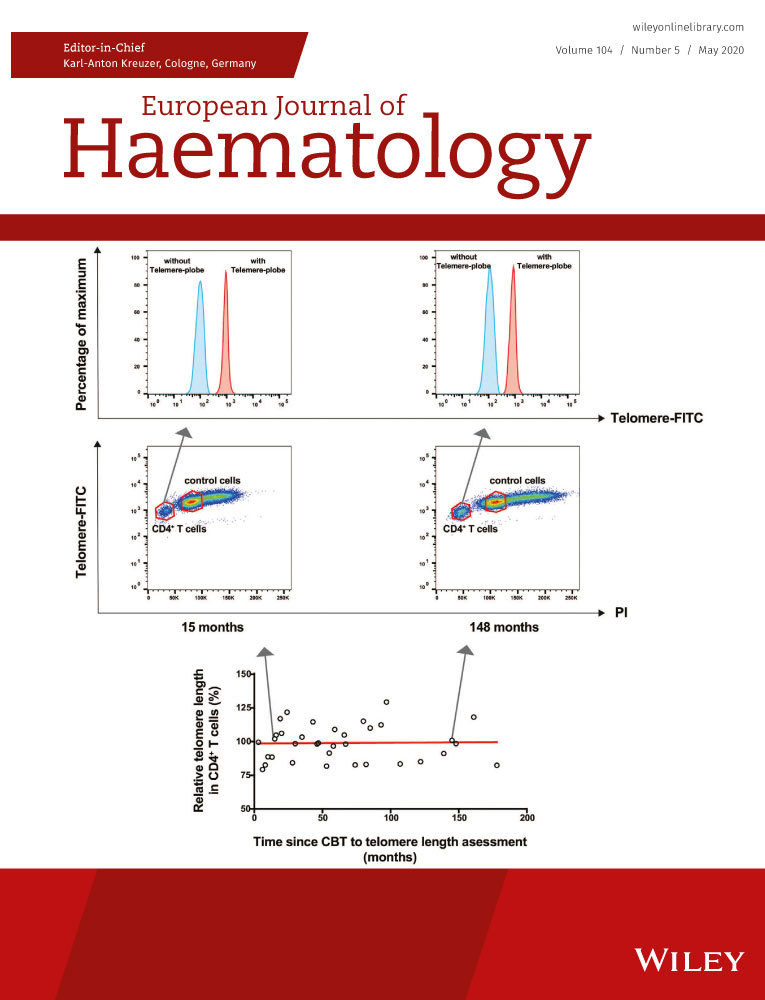Outcome and characteristics of non-measurable myeloma: A cohort study with population-based data from the Swedish Myeloma Registry
Abstract
Objective
We describe survival in patients with oligo- and non-secretory multiple myeloma (MM). We refer to the whole group as non-measurable MM and compare it with secretory MM.
Methods
Oligo-secretory MM was defined as M protein in serum <10 g/L and M protein in urine <200 measured as mg/day, mg/liter or mg/mmol creatinine. If patients had no M protein, they were defined as non-secretory. The groups were also subdivided by Free Light Chains (SFLC) level and ratio.
Results
Out of 4325 patients with symptomatic MM in the Swedish Myeloma Registry during 2008-2016 eligible for the study, 389 patients (9%) had non-measurable MM. Out of these, 253 patients (6%) had oligo-secretory and 136 (3%) had non-secretory MM. Median survival for secretory MM was 42.7 months, non-measurable MM 40.2 months, oligo-secretory MM 38.6 months, and non-secretory MM 44.6 months. Difference in overall observed survival was non-significant for all groups when compared with secretory MM. Within non-secretory MM, stem cell transplantation (SCT), 95% being auto-SCT, was significant for superior survival in multivariate analysis (HR 0.048. P = .0015).
Conclusion
In this population-based study, we found no difference in survival between oligo- or non-secretory MM when compared with secretory MM. SCT appears to be important also for patients with non-secretory disease.
CONFLICTS OF INTERESTS
No conflicts to disclose.




